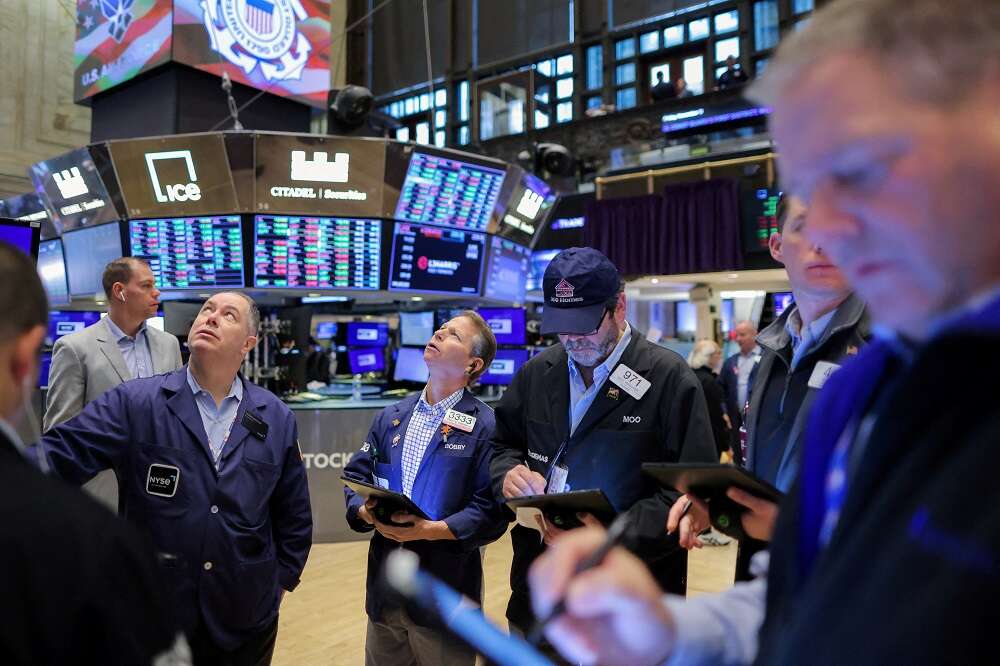
By Lawrence Delevingne and Elizabeth Howcroft
(Reuters) – Wall Street stocks posted strong gains while Treasury yields and the dollar pulled back on Friday as data pointing to U.S. economic growth boosted risk appetite, even as expectations for rate hikes kept bond yields near multi-year highs.
The U.S. services sector grew at a steady clip in February, with new orders and employment rising to more than one-year highs, suggesting the economy continued to expand in the first quarter.
U.S. shares jumped, with the Dow Jones Industrial Average up 1.17%, the S&P 500 1.61% higher, and the Nasdaq Composite adding nearly 2%.
“Following weeks of relentless upward pressure on interest rates, the S&P 500 got a bit of a reprieve today,” said Bill Sterling, global strategist at GW&K Investment Management in Boston.
He added that the small differential between shorter-term bonds indicated lower recession risk: “Market participants seem to be saying that the economy – and corporate profits – can withstand a higher-for-longer interest rate path.”
Asian stocks already jumped on investor optimism of a Chinese economic rebound. The positive market sentiment continued during the European session, with Europe’s STOXX 600 up 0.92%.
The recovery in euro zone business activity gathered pace last month, PMI survey data showed, in the latest piece of data to suggest the bloc would avoid a recession.
But euro zone government bond yields were still near their highest levels in years after euro zone inflation data on Thursday drove market expectations for the European Central Bank’s (ECB) terminal rate to around 4%.
At 2.688%, the benchmark 10-year German yield was near its highest level since 2011.
U.S. Treasury yields paused their rally. The U.S. 10-year Treasury yield fell to 3.960%, down from Thursday’s high of 4.091%. The two-year Treasury yield, which typically moves in step with interest rate expectations, dipped 4.3 basis points at 4.859%.
Federal Reserve Bank of Boston President Susan Collins reiterated in comments made public Friday that more central bank rate rises will be needed to lower high inflation levels.
Investors are trying to gauge that exact path for Federal Reserve rate hikes, after strong U.S. data in recent weeks suggested rates may need to be higher for longer.
“Our overall view is still more consistent with slow disinflation amid some further improvement to global growth,” Goldman Sachs market strategists wrote in a note late Thursday. “That mix should maintain the upward pressure on yields but ultimately limit the damage to equities and provide an overdue tailwind to commodities.”
The MSCI world equity index, which tracks shares in 47 countries, jumped 1.47% on the day, up 5.8% for the year.
DOLLAR RETREATS
The euro ticked up 0.33% on the day, while the U.S. dollar slid from a 2-1/2-month high versus the Japanese yen on Friday, its largest weekly loss since mid-January against a basket of six major currencies.
Analysts polled by Reuters were unfazed by the dollar’s recent strength, up about 7% over the last 12 months, and predicted a weaker greenback in a year amid an improving global economy and expectations the Fed will stop hiking interest rates well ahead of the ECB.
Oil prices rose, recovering from an early slump after Reuters reported that the United Arab Emirates is not planning an exit from the Organization of Petroleum Exporting Countries (OPEC). U.S. crude rose 2% to $79.73 per barrel and Brent was at $85.86, up 1.31% on the day.
Spot gold added 1% to $1,854 an ounce.
Bitcoin was down nearly 5% at around $22,381, its lowest price since Feb. 15.
(Reporting by Lawrence Delevingne in Boston and Elizabeth Howcroft in London; Editing by Alex Richardson, Leslie Adler, Hugh Lawson and Deepa Babington)


